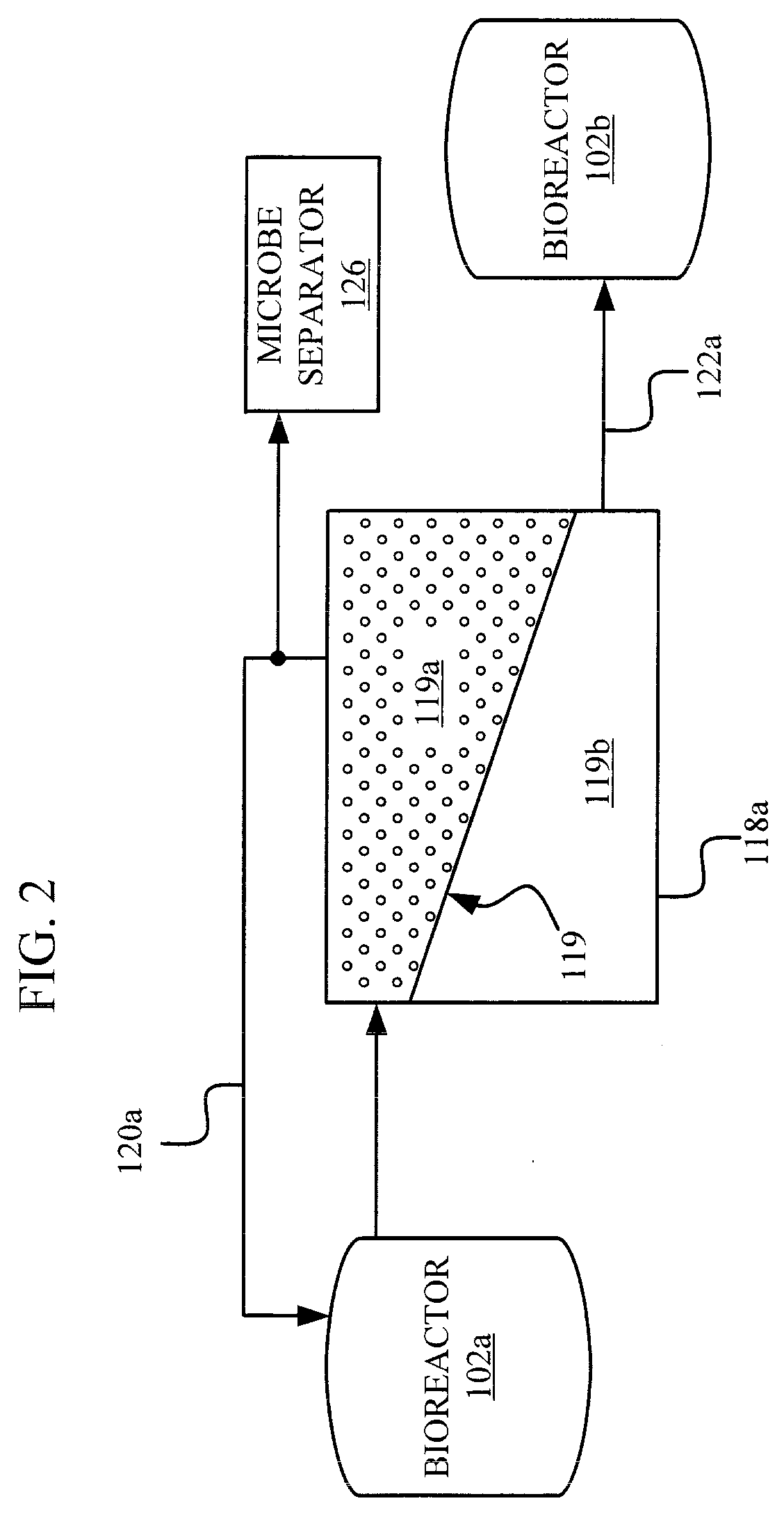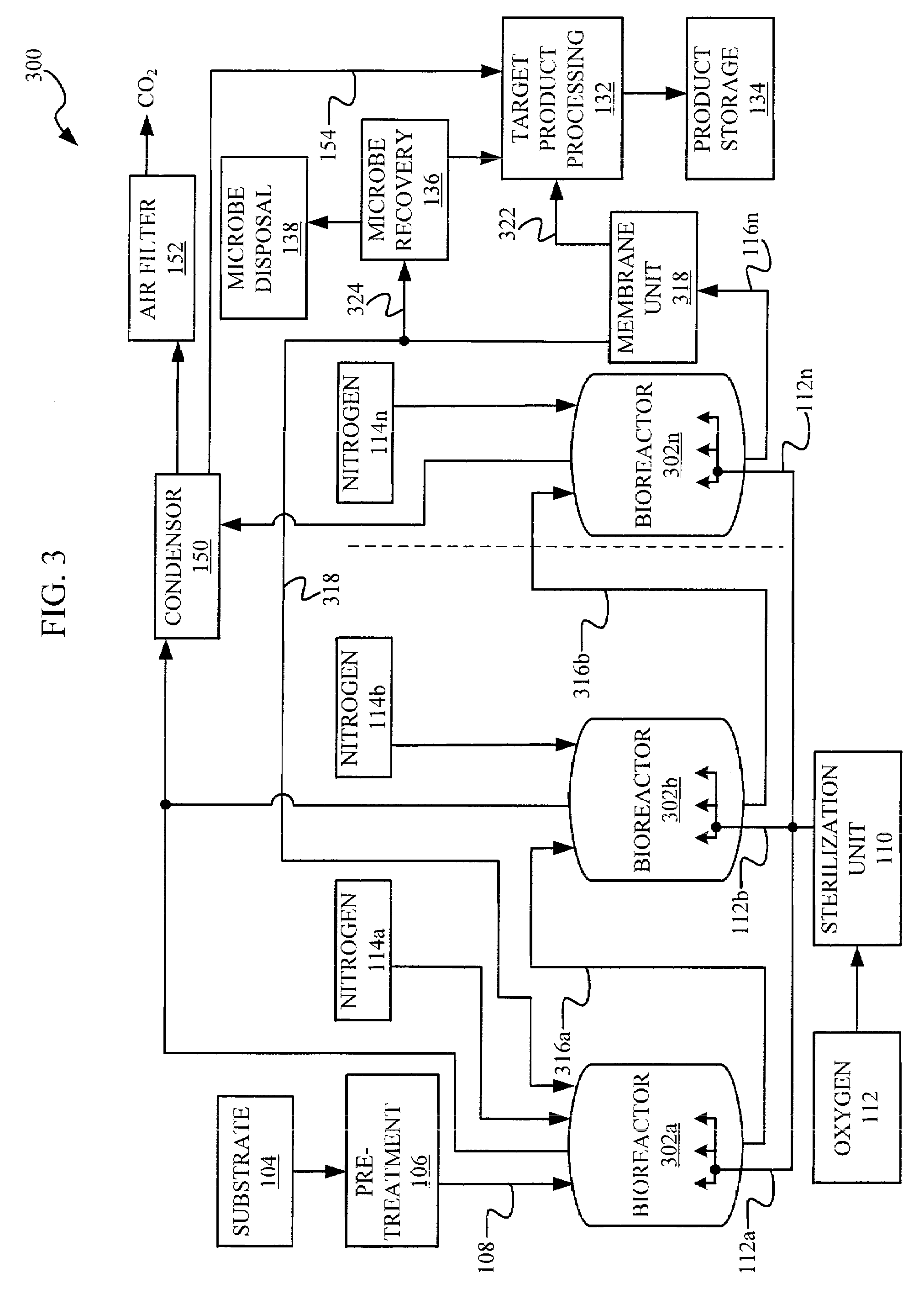Fermentation processes and systems
a technology of fermentation process and system, applied in specific use bioreactor/fermenter, biomass after-treatment, biofuels, etc., can solve the problems of limited product yield, cost and inflexibility of the industry, and the inability of small-scale producers of fermentable byproducts to efficiently convert byproducts into useful target products
- Summary
- Abstract
- Description
- Claims
- Application Information
AI Technical Summary
Benefits of technology
Problems solved by technology
Method used
Image
Examples
Embodiment Construction
[0036]Set forth below is a description of what are believed to be the preferred embodiments and / or best examples of the invention claimed. Future and present alternatives and modifications to the preferred embodiments are contemplated. Any alternatives or modifications which make insubstantial changes in function, in purpose, in structure, or in result are intended to be covered by the claims of this patent.
[0037]Referring first to FIG. 1, a bioreactor system 100 is shown in which incoming substrate may be at least partially processed into a target product and fermentation microorganisms may be recovered and returned to a number of bioreactors throughout the system 100. For example, fermentation microorganisms may be returned to the three reactive vessels, bioreactors 102a, 102b, and 102n shown in FIG. 1. Though three bioreactors are illustrated in FIG. 1, the actual number of bioreactors that may be incorporated into system 100 is unlimited and bioreactors may be added in series, a...
PUM
| Property | Measurement | Unit |
|---|---|---|
| diameter | aaaaa | aaaaa |
| diameter | aaaaa | aaaaa |
| pressures | aaaaa | aaaaa |
Abstract
Description
Claims
Application Information
 Login to View More
Login to View More - R&D
- Intellectual Property
- Life Sciences
- Materials
- Tech Scout
- Unparalleled Data Quality
- Higher Quality Content
- 60% Fewer Hallucinations
Browse by: Latest US Patents, China's latest patents, Technical Efficacy Thesaurus, Application Domain, Technology Topic, Popular Technical Reports.
© 2025 PatSnap. All rights reserved.Legal|Privacy policy|Modern Slavery Act Transparency Statement|Sitemap|About US| Contact US: help@patsnap.com



